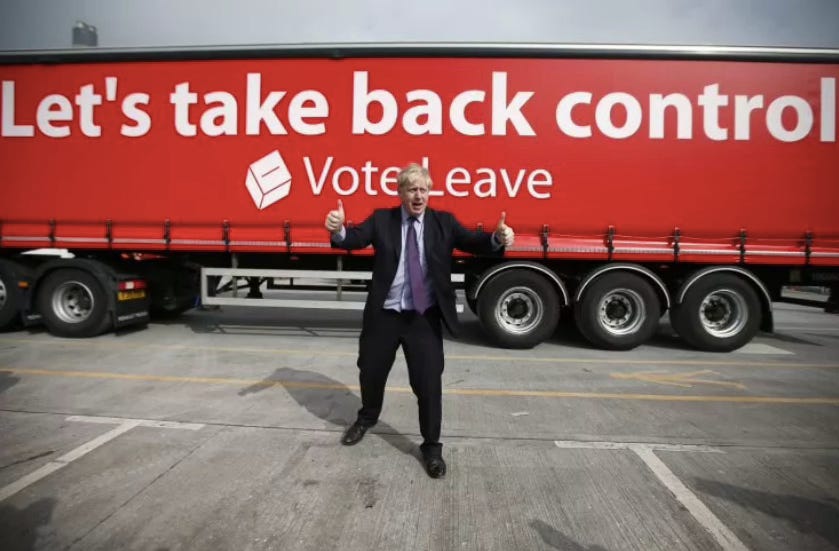National Self-Harm
The Anglosphere's Decade of Own Goals
With Trump back-pedalling (for now) on tariffs, it’s worth recalling the path travelled by the big English-speaking democracies over the past decade.
For the most part, it’s not a pretty picture.
Five years after Britain officially left the EU in 2020, only three in ten (30 percent) say the UK was right to vote to leave. (55% say it was wrong.)
According to another recent poll, 68 percent of Britons would accept free movement of EU citizens in return for restored access to EU markets.
The UK’s Office for National Statistics has estimated, using a chained value measure for GDP per capita with a reference year of 2022, that Britons earned £30,553 per person in 2016 and £31,380 in 2024 – a gain of less than £100 per year.
Since 2016, the UK has shed business investment, which according to 2023 data is 31 percent below its pre-Brexit trend. UK exports to the EU grew from £223 to £358 billion over 2016-24, but imports doubled – from £291 billion to £592 billion.
(Then-British prime minister Boris Johnson during the Brexit campaign at Europe Worldwide, a freight company in Dartford, on March 11, 2016. Peter Nicholls/Reuters)
Even the UK’s relatively strong services industry experienced an annual 9.2 percent reduction in exports. Total market capitalization of London Stock Exchange (LSE)-listed firms was £3.7 trillion at the end of 2016 and roughly the same in August 2024.
In March 2017, the LSE’s Group Chief Executive used the group’s annual report to highlight growing ties to China: “The London Stock Exchange is the only international exchange outside Greater China that has bond listings from all four major Chinese banks as well as the China Development Bank and, in June 2016, we were honoured to be chosen as the venue for the listing of the first Chinese sovereign RMB bond to be issued outside of mainland China.”




